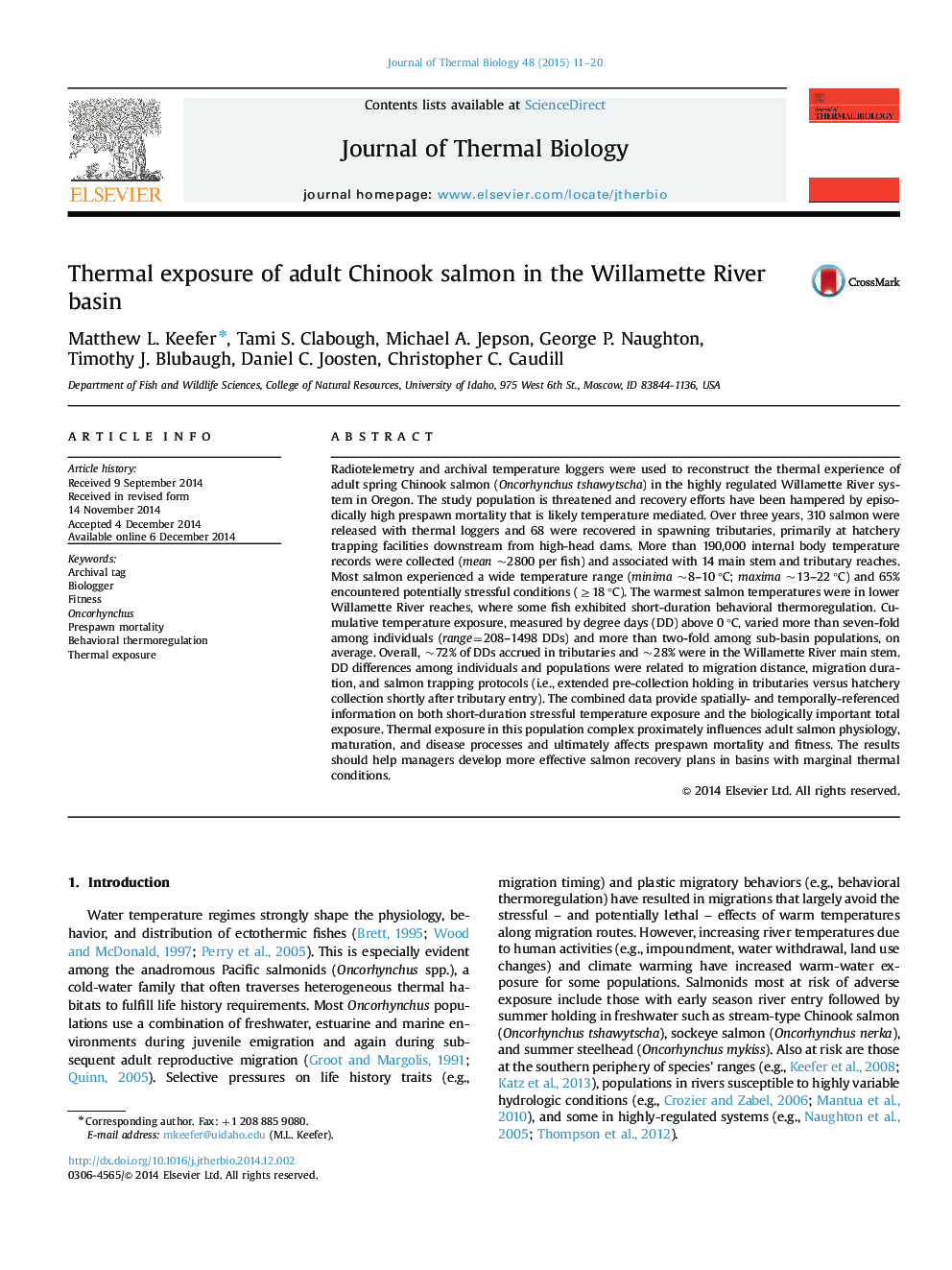| Article ID | Journal | Published Year | Pages | File Type |
|---|---|---|---|---|
| 2842845 | Journal of Thermal Biology | 2015 | 10 Pages |
•Chinook salmon encountered stressful (18–22 °C) temperatures in a regulated river.•Exposure varied widely among individuals, populations, years, and river reaches.•The species' imperative to reach cool tributaries may limit thermoregulatory behavior.•Cumulative thermal exposure likely elevated disease and prespawn mortality risks.•Climate and habitat changes may constrain salmon recovery in southern populations.
Radiotelemetry and archival temperature loggers were used to reconstruct the thermal experience of adult spring Chinook salmon (Oncorhynchus tshawytscha) in the highly regulated Willamette River system in Oregon. The study population is threatened and recovery efforts have been hampered by episodically high prespawn mortality that is likely temperature mediated. Over three years, 310 salmon were released with thermal loggers and 68 were recovered in spawning tributaries, primarily at hatchery trapping facilities downstream from high-head dams. More than 190,000 internal body temperature records were collected (mean ~2800 per fish) and associated with 14 main stem and tributary reaches. Most salmon experienced a wide temperature range (minima ~8–10 °C; maxima ~13–22 °C) and 65% encountered potentially stressful conditions (≥18 °C). The warmest salmon temperatures were in lower Willamette River reaches, where some fish exhibited short-duration behavioral thermoregulation. Cumulative temperature exposure, measured by degree days (DD) above 0 °C, varied more than seven-fold among individuals (range=208–1498 DDs) and more than two-fold among sub-basin populations, on average. Overall, ~72% of DDs accrued in tributaries and ~28% were in the Willamette River main stem. DD differences among individuals and populations were related to migration distance, migration duration, and salmon trapping protocols (i.e., extended pre-collection holding in tributaries versus hatchery collection shortly after tributary entry). The combined data provide spatially- and temporally-referenced information on both short-duration stressful temperature exposure and the biologically important total exposure. Thermal exposure in this population complex proximately influences adult salmon physiology, maturation, and disease processes and ultimately affects prespawn mortality and fitness. The results should help managers develop more effective salmon recovery plans in basins with marginal thermal conditions.
